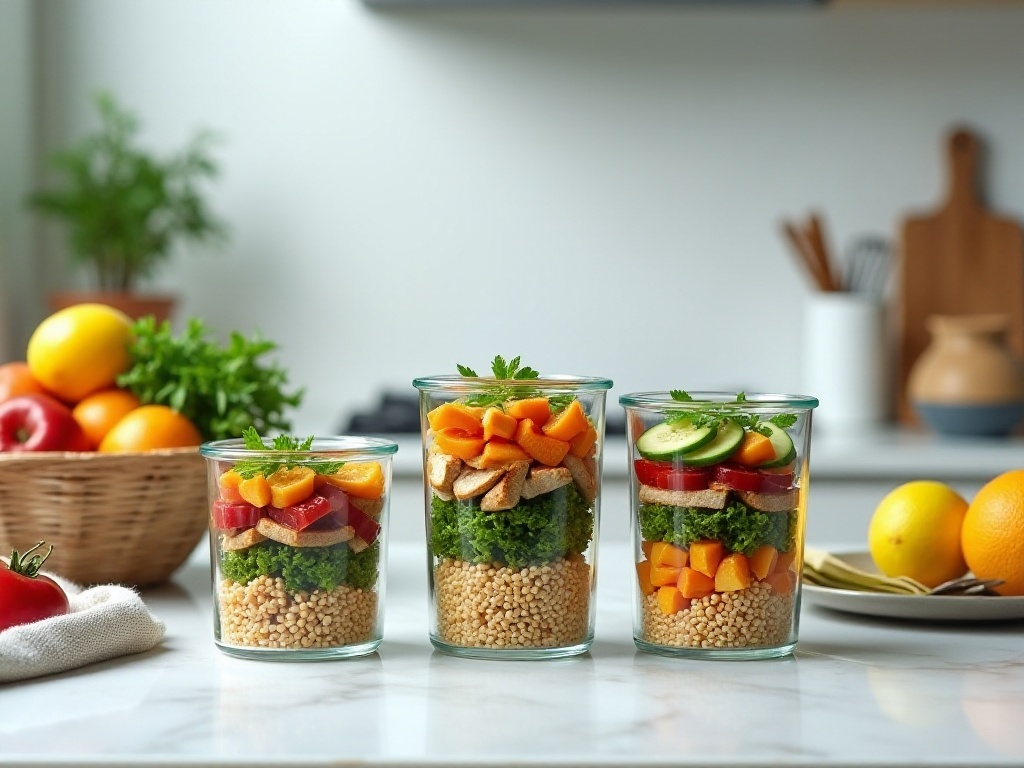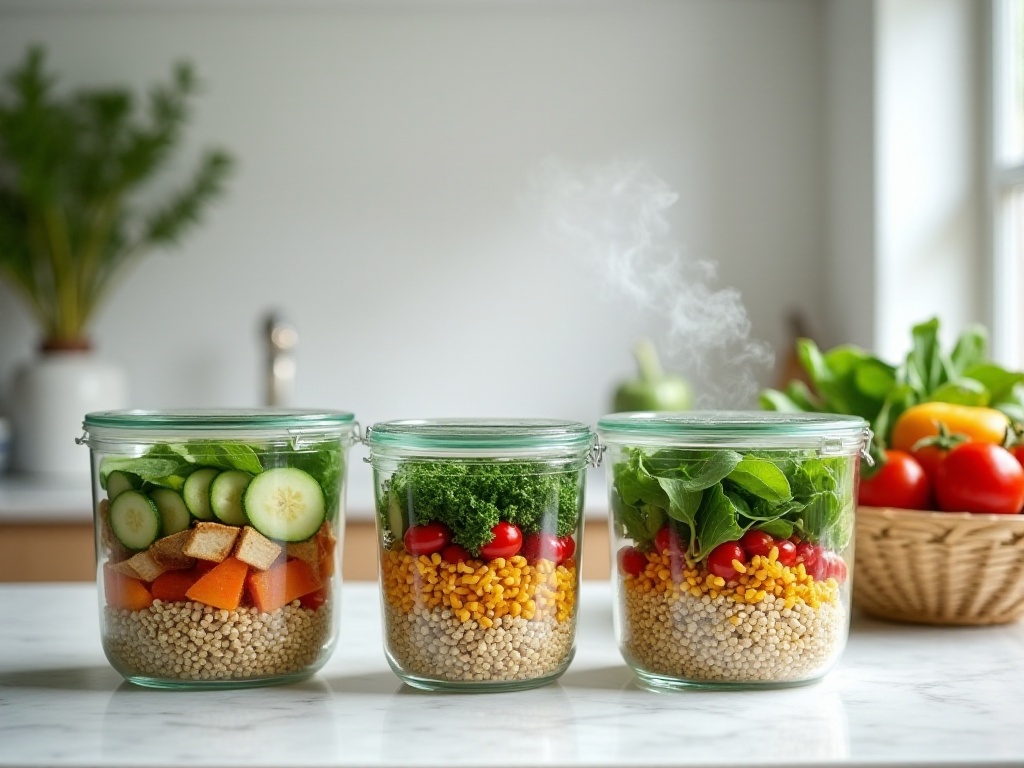Introduction
Recently, I've noticed an overwhelming amount of dietary advice flooding social media platforms and friend circles. Some promote keto diets for quick weight loss, others recommend fasting to improve bodily functions, and some claim that a vegan diet is the ultimate healthy choice. All this information is overwhelming, making me question every bite I take.
Actually, I don't think healthy eating needs to be this complicated. Through years of exploration and practice, I've gradually discovered some ways to make healthy eating feel natural and effortless, and today I'd like to share my experiences with you.
Dietary Foundations
As someone who has loved exploring food since childhood, I've spent a significant portion of my life in the kitchen. From initially burning eggs to now mastering various cooking techniques, this journey has taught me that building a solid foundation is crucial for developing healthy eating habits.
Speaking of foundations, balanced nutrition is key. I've noticed many people think healthy eating means either eating like a rabbit or meticulously calculating every gram of nutrients. It doesn't have to be that complicated. I've developed a practical "rule of thirds": divide your plate into equal portions of protein, healthy fats, and vegetables.
For example, my recent favorite lunch consists of: a crispy-outside, tender-inside piece of salmon (protein section), half a sliced avocado (healthy fats section), and a generous portion of sautéed broccoli (vegetable section). This combination not only keeps me satisfied but also maintains stable blood sugar levels, preventing afternoon drowsiness.
Plus, this combination is incredibly flexible. The protein section can be switched to chicken breast, tofu, or shrimp; the healthy fats section can include nuts, olive oil, or tahini; and the vegetable section offers endless possibilities, from Chinese cabbage to tomatoes, carrots to spinach. This flexibility makes healthy eating interesting and never monotonous.
I've discovered that proper nutritional balance can bring unexpected benefits. For instance, since I started paying attention to balanced nutrition, my skin has noticeably improved. I used to get frequent breakouts, but now they're rare. Also, I used to feel tired often, but now my energy levels have significantly improved, along with my work efficiency.
Another crucial point about dietary foundations is learning to listen to your body's signals. Many people are used to constraining their eating habits with external standards, like eating at specific times or consuming certain portions. However, our bodies are actually the best guides.
I've developed a habit of paying close attention to my satiety levels while eating. When I feel about 70% full, I pause for a moment. I've discovered that it takes some time for the stomach to signal fullness to the brain. This practice not only prevents overeating but also helps me better appreciate the satisfaction food brings.

Practical Tips
When it comes to practical tips, my most valuable experience is about food preparation. I remember often facing an empty fridge after work when I was too tired, ultimately resorting to takeout. But since implementing my "Sunday meal prep plan," this rarely happens anymore.
Every Sunday afternoon, I dedicate two hours to food preparation. While it seems like a long time, it actually saves daily preparation time throughout the week. I pre-cook weekly staples like brown rice, quinoa, and oats, portioning them out. Vegetables are washed and cut in advance, stored in containers. Meat is divided into small portions and sealed in bags. This way, even when I'm exhausted after work, I can prepare a healthy dinner in just 20 minutes.
Moreover, I've found that preparing ingredients in advance helps me better control my diet quality. For example, when there are cut fruits and vegetables in the fridge, I'm less likely to crave snacks. By my calculations, this habit saves me at least 5 hours of cooking time each week, which is a significant time investment.
Regarding ingredient selection, I have a particularly useful suggestion: choose seasonal produce whenever possible. This isn't just about saving money; seasonal ingredients often have higher nutritional value. For instance, in the north, winter cabbage usually costs only one-third of its summer price but contains 30% more vitamin C. This reflects the wisdom of "eating seasonal produce" that our elders often mention.
Besides seasonal selection, I also pay attention to food diversity. For example, I deliberately include vegetables and fruits of different colors in my weekly shopping list. Red tomatoes, orange carrots, green choy sum, purple eggplants - different colors often represent different nutrients. This ensures nutritional balance and makes the plate visually appealing.
I've also developed some tricks for seasoning. Many people think healthy eating means bland food, but that's not true. Proper seasoning not only increases appetite but also helps the body better absorb nutrients. My go-to healthy seasonings include ginger, garlic, cilantro, rosemary, and natural sauces like sesame paste and peanut butter. These can make healthy eating more flavorful.
Environmental Management
Speaking of environmental management, this might be a crucial point that many people overlook. Last year, I conducted an interesting experiment: I put away all snacks and only placed fruits in visible spots. Surprisingly, this simple change had a dramatic effect - my snack consumption dropped by 70%.
This experiment taught me an important lesson: our eating behavior is largely influenced by our environment. If the environment is full of temptations, even the strongest willpower can't resist. Conversely, if we create an environment conducive to healthy eating, many things become much easier.
Based on this understanding, I made a series of adjustments to my home environment. First was the refrigerator reorganization: I divided it into clear zones with fresh produce in the most visible spots, protein ingredients in the middle layer, and staples at the bottom. Snacks and desserts were relegated to the least visible corners. This arrangement ensures that healthy choices are the first things I see when opening the fridge.
I now always keep cut carrot sticks and cucumber slices ready in my fridge, paired with homemade yogurt dip. This not only addresses sudden hunger but is also very healthy. This simple change reduced my snack expenses by nearly 500 yuan in three months. Plus, I noticed my skin condition improved, probably due to reduced snacking.
Besides the fridge, I also pay attention to dishware selection. Research shows that using smaller dishes can unconsciously reduce food intake. So I specifically switched to a smaller set of dishes, and indeed found that my portion control became more natural.
Regarding the dining environment, I've made some changes too. For instance, I keep the dining table clean and only set out necessary utensils and food. No phone, no TV - just focusing on enjoying the meal. This not only helps me better appreciate the food's taste but also helps me notice satiety signals, preventing overeating.

Sustainable Strategies
Through years of practice, I've increasingly realized that sustainability is the most important principle of healthy eating. I've seen too many people adopt extreme dietary methods for quick weight loss, such as juice-only diets, completely avoiding carbs, or eating just one meal a day. These methods might show short-term results but rarely last long.
Data shows that 90% of rapid weight loss cases experience rebound within a year, often ending up heavier than before. This is because extreme dieting disrupts the body's metabolic system, triggering "emergency mode" that makes the body more prone to storing fat.
In contrast, choosing a moderate weight loss pace, like 0.5-1 kg per week, increases the success rate of maintaining ideal weight to 70%. This is because the body has enough time to adapt to new eating patterns without triggering extreme stress responses.
In practice, I've found that developing sustainable dietary strategies requires considering many factors. First is considering your lifestyle. For instance, if you're very busy at work, don't create overly complex meal plans. Simplicity is key.
Second is considering personal taste preferences. Healthy eating doesn't mean completely giving up foods you enjoy. For example, I love sweets but don't want to consume too much sugar. I discovered that fruits can satisfy this craving - ripe bananas and blueberries offer natural sweetness while providing rich nutrients.
Third is considering cost factors. Healthy eating doesn't have to be expensive. For instance, legumes are an excellent protein source and much cheaper than meat. Seasonal produce not only has higher nutritional value but is also more affordable.
Finally, learn to give yourself some flexibility. I follow the "80/20" rule: strictly follow healthy eating principles 80% of the time, and allow some relaxation for the remaining 20%. This maintains healthy eating habits without feeling too restrictive.

Concluding Thoughts
After years of practice, I increasingly feel that healthy eating is actually quite simple. It doesn't require extremely strict rules, expensive ingredients, or complicated cooking techniques. It's more of a lifestyle attitude, a way of respecting and caring for your body.
Through these seemingly small but consistent changes, we can make healthy eating feel natural and effortless. For example, placing fresh fruit in visible locations, preparing cut vegetables for easy access, spending some time on weekend food prep - these are all easy changes that, when maintained long-term, produce amazing results.
Most importantly, remember that change isn't about speed but sustainability. Like growing a tree, what matters isn't how much it grows today, but whether it can grow healthily for many years. The same applies to healthy eating - it's okay to go slow, what matters is making it a habit, a natural part of life.
Actually, everyone can find their own approach to healthy eating. It might take time to explore and adjust, but with patience and curiosity, you'll surely find what works best for you. After all, this isn't a war to be won quickly, but a journey worth savoring.







